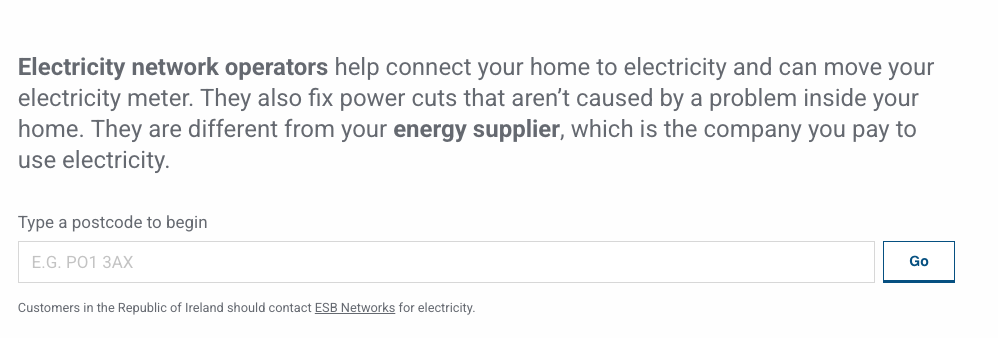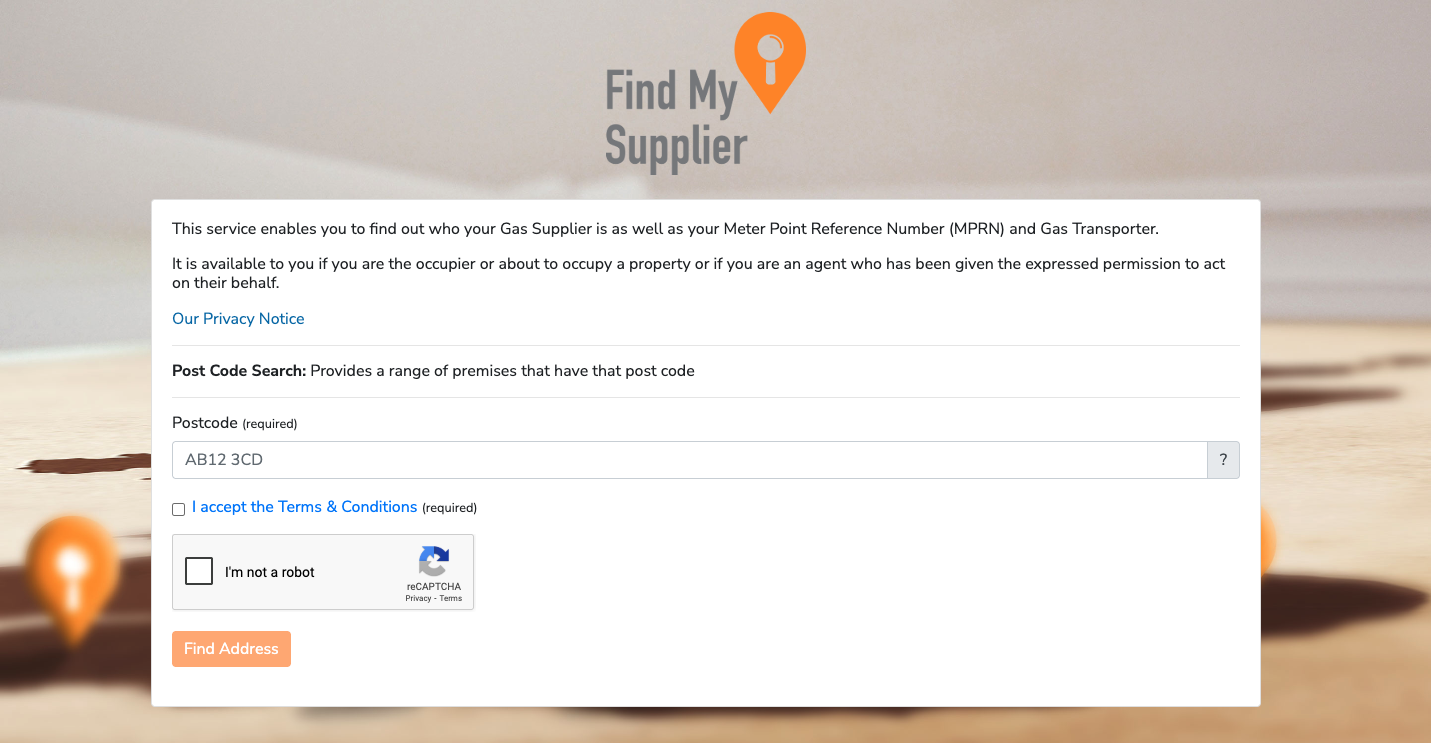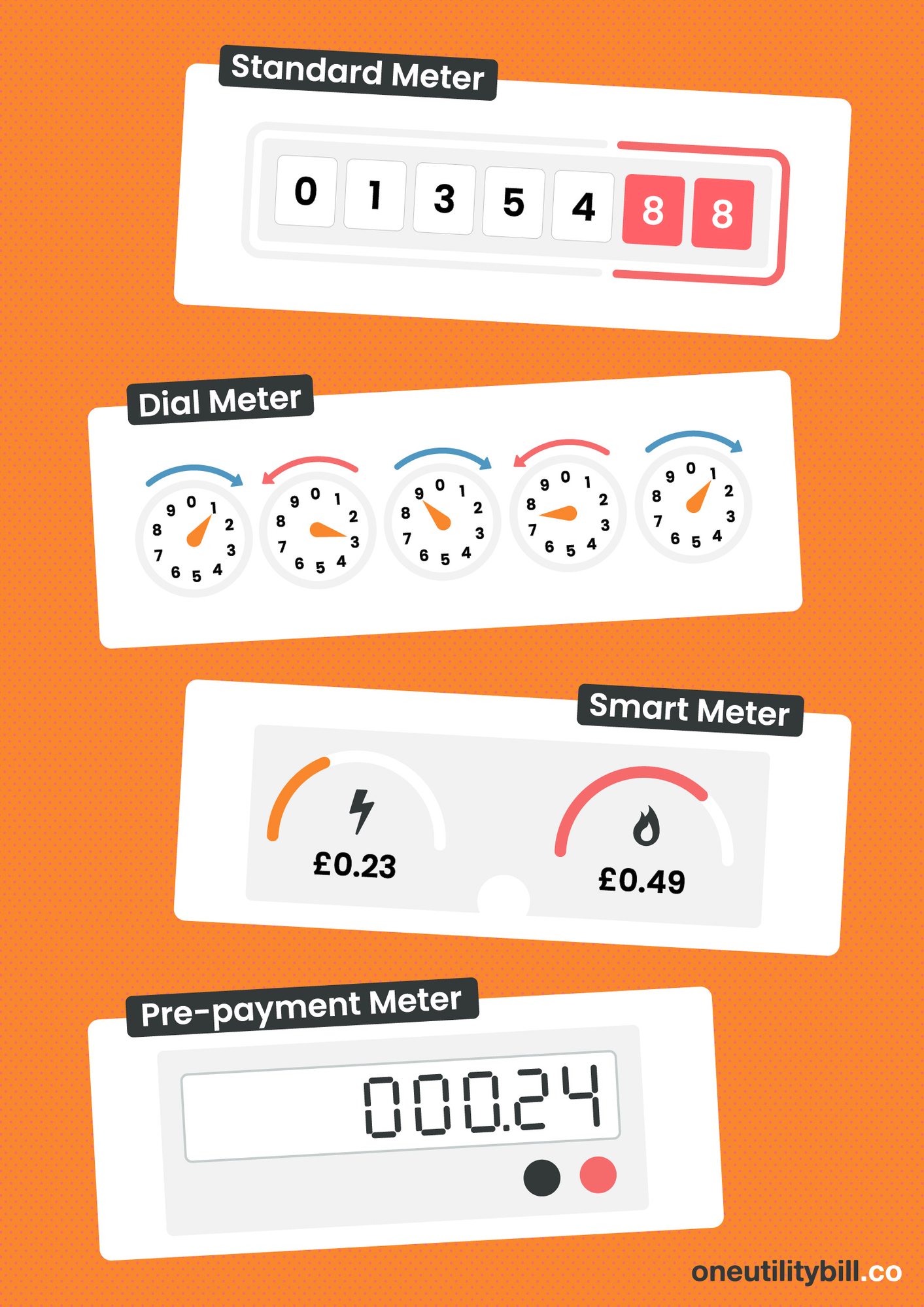Quick links:
- Before you move
- Moving in
- Understanding your new meter
- Understanding suppliers and tariffs
- Choosing suppliers and tariffs
- Renters vs homeowners: what’s the difference?
- Simplify your bills in your new home
Moving into your new home is always exciting, but can also be very stressful. There’s plenty to worry about, which is why so many people totally overlook the importance of setting up their utilities correctly.
Here at One Utility Bill, we’re all about making managing your utilities as easy as possible. With that goal in mind, we’ve created this step-by-step guide to setting up gas and electricity in your new home for UK renters and buyers alike.
If you’re moving from one place to another, you’ll need to notify your current supplier to ensure no unexpected charges will come your way. We’ll cover the best way to do this, plus how to set up gas and electric with a new supplier, read your new meter and consolidate your payments, in this comprehensive guide.
Let’s get started…
Before you move
If you are leaving your current home and moving to another, then you’ll need to follow a few steps to make the process as smooth as possible.
The last thing you want when you’re settling into your new home is an unexpected bill from your last place, so notify your energy supplier as soon as possible. Aim to give them at least 48 hours as a general idea. Provide them with a forwarding address for your final bill and inform them of the details of the new owners or tenants if you know them.
When you’re saying your final farewell to your old home, be sure to take meter readings. Take a photo so you have dated proof of the readings, just in case there are any discrepancies with the new tenants or owners.
Questions to ask ahead of the move
If possible, ask the previous owners or the landlord who currently supplies the energy to your new home. This might not always be possible, but it’s good to know and will save time overall. Remember, you are not contractually obligated to use the existing utility supplier to the property; you, as the tenant or owner, can choose who provides your utilities.
The supplier for your old home might not be the best option for your new one, so it’s always smart to shop around when you move. If you haven’t chosen a supplier by the time you move in, you may be charged deemed rates, which are typically more expensive.
Moving in
Congrats! You’ve moved into your new home. It’s a dream come true, but also probably one of the most stressful things you’ve ever done.
While you’re navigating unpacking and decorating, don’t forget to take control of your utility bills. It’s easy to put it off, but complacency now could lead to added stress and even more expensive bills in the future.
Take meter readings
As soon as you move in, take a photo of the meter, just like you did in your old home. Then you will know how much gas and electricity you are liable for. Can’t find the meter? Check under the stairs, in the cupboards or even in the garage.
Find out the current supplier
Remember, you don’t have to use them, but you do need to know who is currently supplying the utilities to your property. Haven’t got a clue? Here are a couple of ways to find out the property’s current suppliers:
- Look for any letters addressed to ‘The Occupier’ from energy companies
- For electricity: Contact your local electricity distribution network operator. The Energy Networks Association has a handy tool on their website for finding out this information.

Image: The Energy Networks Association network operator finder tool.
- For gas: Use the Meter Point Administration Service’s Find My Supplier tool to find out your current gas supplier as well as your Meter Point Administration Number (MPAN), which you will need to take a note of for your new supplier.

Image: Meter Point Administration Service 'Find My Supplier' tool.
Check for supply
Does the gas and electricity actually work at your new home? It might seem obvious, but that’s one of the very first things to check when you walk in the door. Other initial checks include finding the trip switch, mains gas valve and fuse box.
Find out who you need to contact if there is an emergency or no supply– this is all information you should hopefully get from the landlord or past owners, but your current supplier should also be able to tell you everything you need to know to ensure maximum safety in your new home.
Understanding your new meter
It might seem like every home has its own unique meter. This is, of course, not true, but it doesn’t make it any less complicated to locate and accurately read the meters, especially when you’re already overwhelmed from the big move.
Here’s a quick guide to reading different meter types:
- Digital meters: With a digital meter, you will have a single row of numbers. This is your reading. Ignore any numbers in red, or anything after a decimal point. If you have two readings, either both showing at once or alternating on the screen, then you have a dual-rate meter, which means you pay a different amount for peak and off-peak energy.
- Dial meters (clock-style): While less common, you might still find a dial meter in an old home. This should be read from left to right, noting the direction of each dial. Always take the lower number if the pointer is in the middle of two numbers.
- Smart meters: A smart meter will automatically send readings to the supplier, but you should still learn how to manually read it, especially if you are looking to change supplier and the meter was provided by the original supplier. Finding the reading on your smart meter should be relatively easy, scroll through the options until you find the right one. If in doubt, search online for the name and model of your smart reader, and you should find instructions.
- Pre-payment meters: You can check if there is any credit or debt on the display of your prepayment meter. Each pre-payment meter is slightly different, so you can check the exact way to read the meter by searching online for the make, model and supplier of your meter.

Image: Diagram of different meter types.
What are MPAN and MPRN numbers?
Earlier in this guide, we talked about the Meter Point Reference Number (MPAN) for gas. There is also a Meter Point Reference Number (MPRN) for electricity meters. These numbers are unique to your meters and can be used to link your meter to your specific supply point. Finding out this number and keeping it on file, is important, as you’ll need to give it to your new supplier so they can track where your energy is coming from.
Help! I can’t access my meter
If you can’t access (or even find) your meter, then you will need to speak to your landlord or the former homeowner as soon as possible. Since getting an early meter reading is vital to ensure you’re billed accurately for what you use, it’s super important to get access to your meter.
Understanding suppliers and tariffs
Now you’re settled in your new home, it’s time to turn your attention to getting the very best deal for your utility bills. Here’s the process:
- Contact the property’s current supplier: Register your details, send the move-in meter readings and ensure any accounts for the property are in your name. Even if you intend to move supplier, you should do this to ensure you’re paying for energy you use in the meantime.
- Acquire and read the ‘Deemed’ contract: Deemed rates are those given to occupants when they first move into a new property; these are typically more expensive, so you should seek to negotiate for a new contract and check other suppliers as soon as possible.
- Get to grips with your initial tariff: Take a look at the name and rates of your current tariff, and what this will mean for your monthly budget.
- Dual fuel vs separate suppliers: The former means you get both gas and electricity from the same supplier, while you can also have different companies provide each type of fuel. If you’re keen on the hassle-free feeling of having just one supplier, then you can get that with One Utility Bill– we give you one single bill, even if your energy is supplied by different companies.
- Pre-payment meters: If you move into a property with a pre-payment meter, you will need to use this initially while you find a supplier who is happy to switch you over, if that’s your plan. Typically, these meters need a card or key, so make sure you have this registered in your name.
Choosing suppliers and tariffs
Picking a new supplier can be daunting, especially if you have both gas and electricity. Consolidate these efforts with the team at One Utility Bill, who will find you the best deals for both of your utilities, as well as water and even broadband, and then roll it all into one simple bill.
Price is obviously an important factor for your decision process, but you might also want to consider sustainability and, more specifically, where your energy is coming from. Renewable energy is a hot topic and one that is frequently misunderstood. Discover where it comes from, and ways to be more sustainable with your energy usage, in this blog.
Fixed vs flexible energy tariffs
Depending on your situation, you will be offered fixed and flexible energy tariffs. Fixed tariffs are becoming more common as wholesale energy prices settle following a period of turbulence. These tariffs offer fixed rates even if the energy price cap changes. Flexible or variable rates will change with external factors, but there are other benefits, like rolling contracts and lower or no exit fees.
Learn more about fixed and variable rates in our dedicated guide.
Payment methods
There are typically a couple of different ways to pay for your energy:
- By direct debit: Suppliers might offer a small discount for this method, as it is their preferred way of receiving payment.
- Payment on receipt of the bill: Either quarterly or monthly, some suppliers will allow you to pay after you receive the bill– this is typically a more expensive method.
- Pre-payment meter: The most expensive method of payment is pre-payment, where you use a card or key to ‘top-up’ your meter with credit in advance of usage.
Stick or switch?
As we’ve mentioned, you don’t have to stick with the property’s current supplier, and you certainly shouldn’t settle for the deemed rates without first shopping around.
Renters vs homeowners: what’s the difference?
When it comes to utilities, there are a few things renters and homeowners should know. If you’re moving from rented into your very own home, or vice versa, then this section will help clarify any differences in how your utilities are managed.
For tenants
- Who pays? If your name is on the bill, then you usually have the right to choose your energy supplier and switch tariffs, etc. If your landlord pays the energy bills and includes this in your rent, then you probably don’t have control over the tariff or supplier. Speak directly to your landlord to find out.
- Check your tenancy agreement: Read the documents for any information regarding your utilities.
- Keep the landlord informed: Make sure your landlord and, if needed, your letting agent know who is responsible for your utilities and whose job it is to notify the supplier of any changes to the tenancy.
- Lacking previous bill history in that property? Remember that suppliers will estimate usage eventually, so new homeowners should send regular readings (or get a smart meter) to ensure bills are as accurate as possible.
For homeowners
- Full responsibility: homeowners are entirely responsible for choosing their own suppliers and managing individual energy accounts. One Utility Bill makes this easy with a simplified combined bill.
- Smart meter rights: if your property doesn’t have a smart meter, you can contact your supplier and ask them to install one. If, on the other hand, you don’t want one, you’re not under any legal obligation and can refuse one.
- Make your own decisions: as a homeowner, it’s up to you to understand the efficiency ratings of your existing heating systems and to make your own decisions about efficiency and sustainability when buying new appliances, installing new energy systems and upgrading your home.
Simplify your bills in your new home
For both homeowners and tenants, setting up gas and electric in a new home can be a source of stress and frustration, especially when you might be unfamiliar with the current supplier, the meter or even the payment system. Hopefully, this guide has given you insight into the process of moving home and what that means for your utilities.
In an ideal world, your utility bill would be consolidated into one single bill, both providing the best deal and reducing the pesky paperwork. Luckily, One Utility Bill is turning that ideal world into a reality, having created a one-bill system that saves both time and money, two of the most important factors for anyone moving house. Get a quote for your one monthly bill with zero hassle today.


